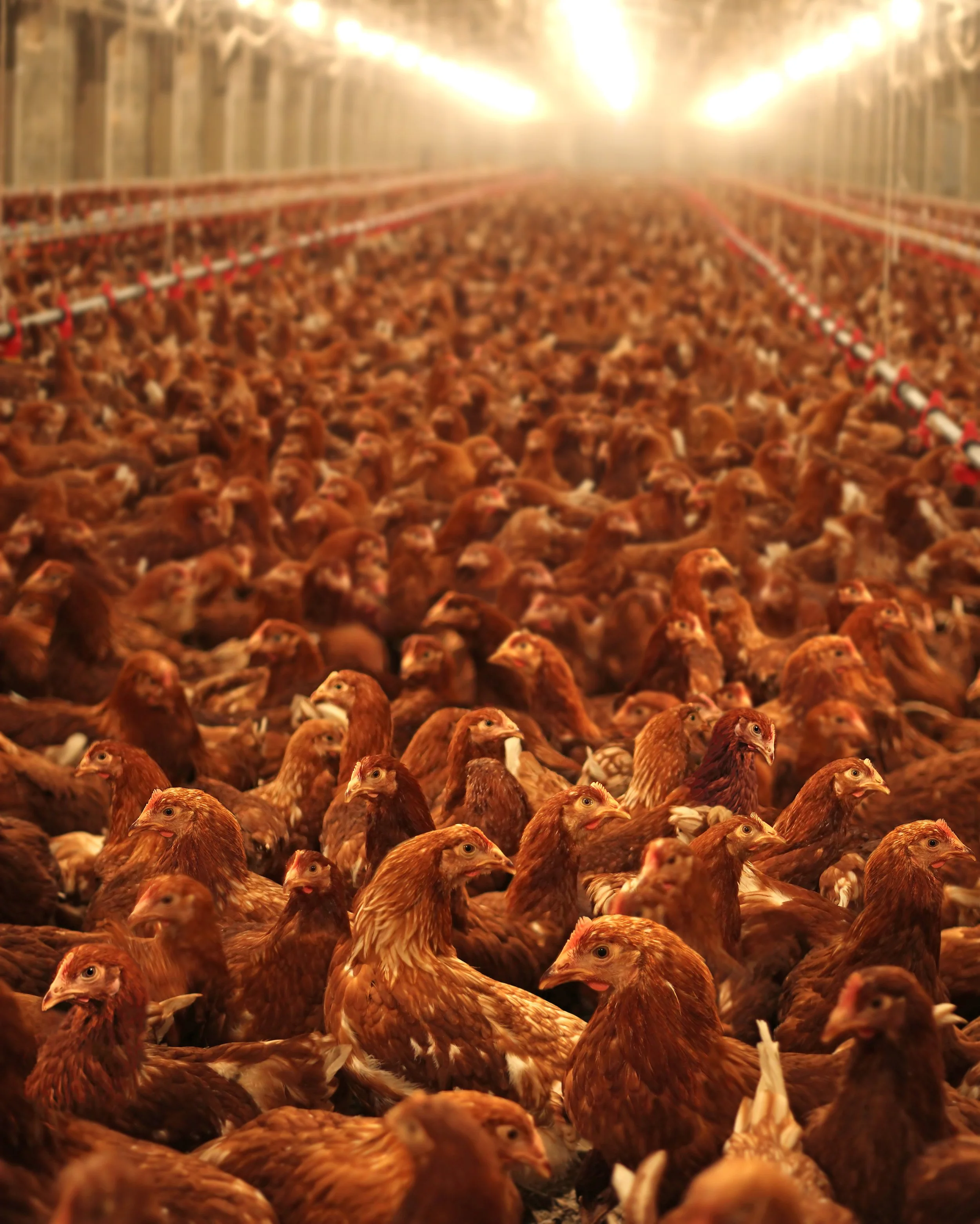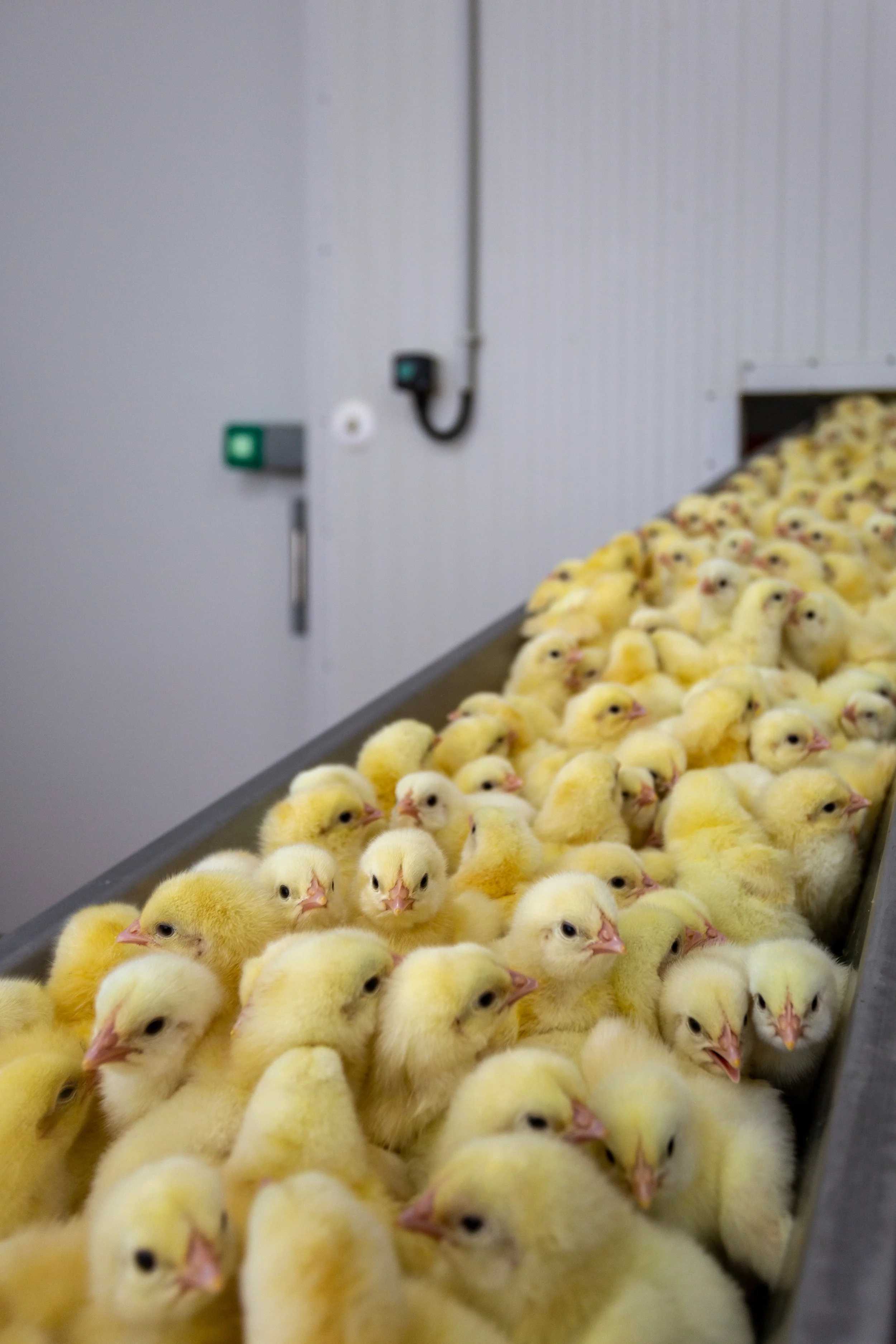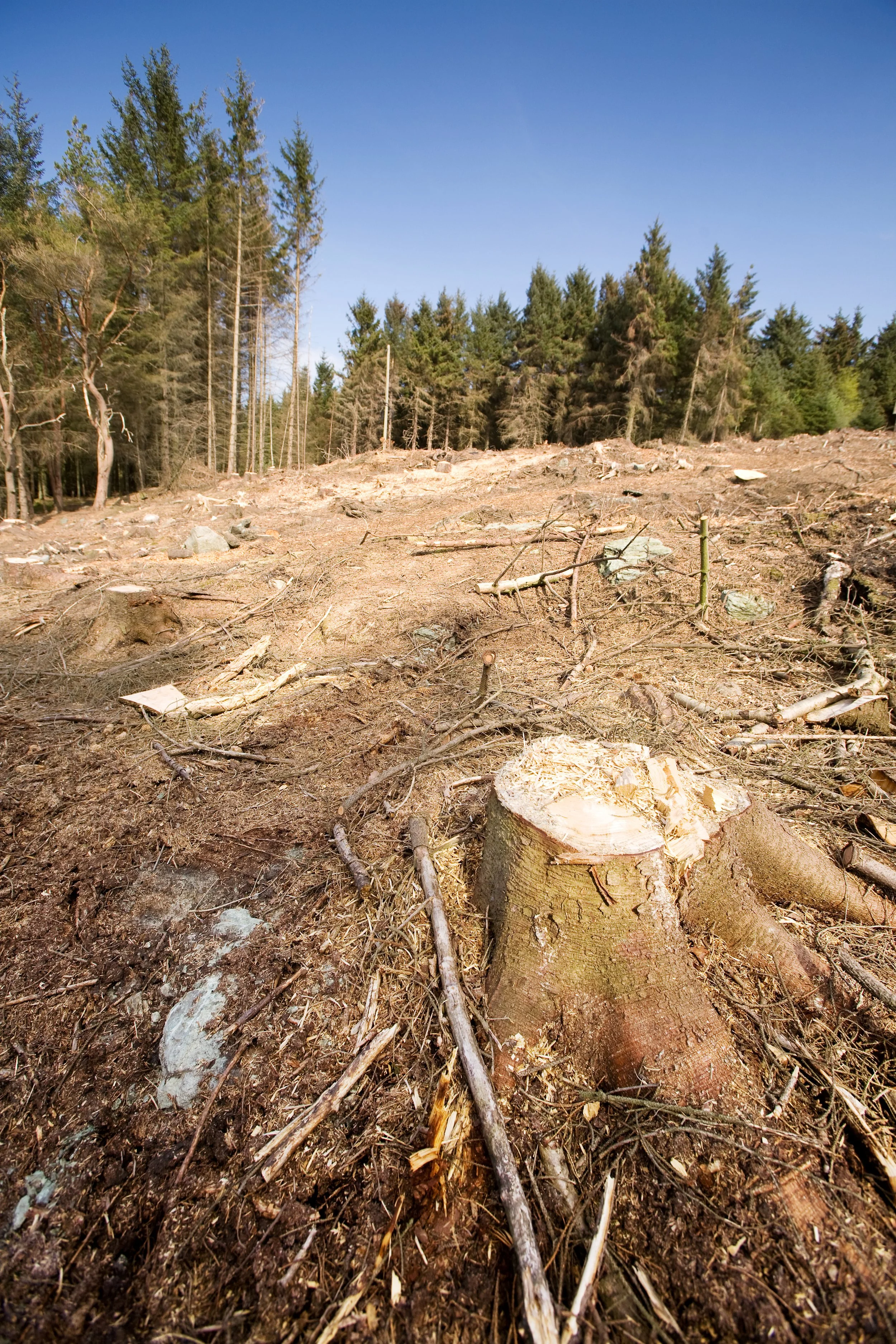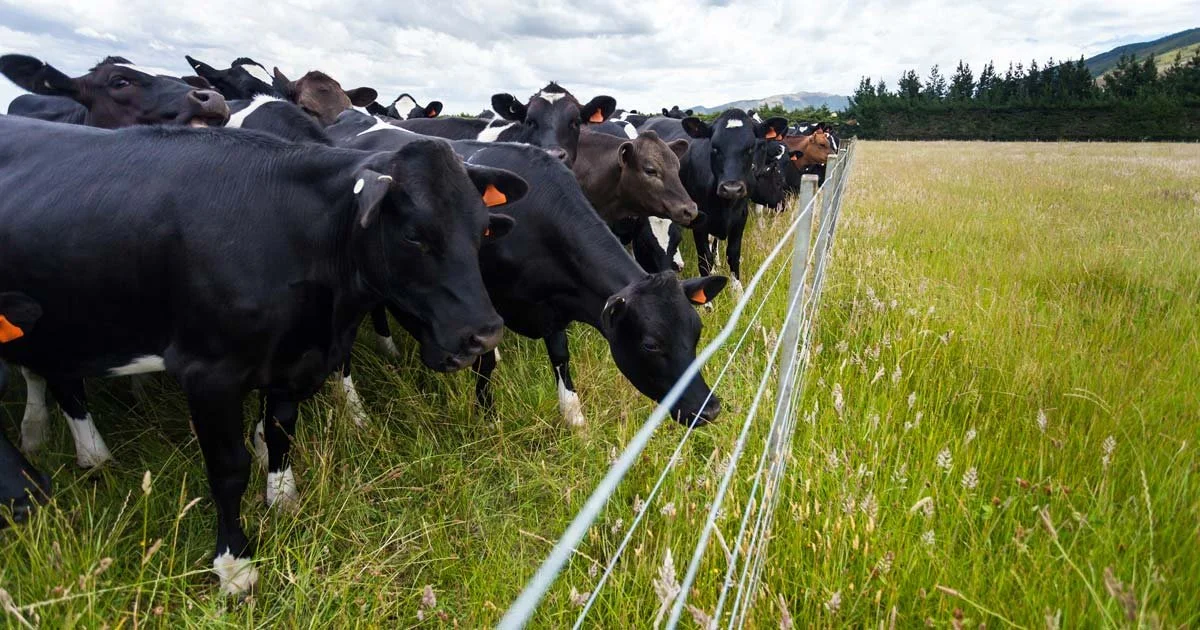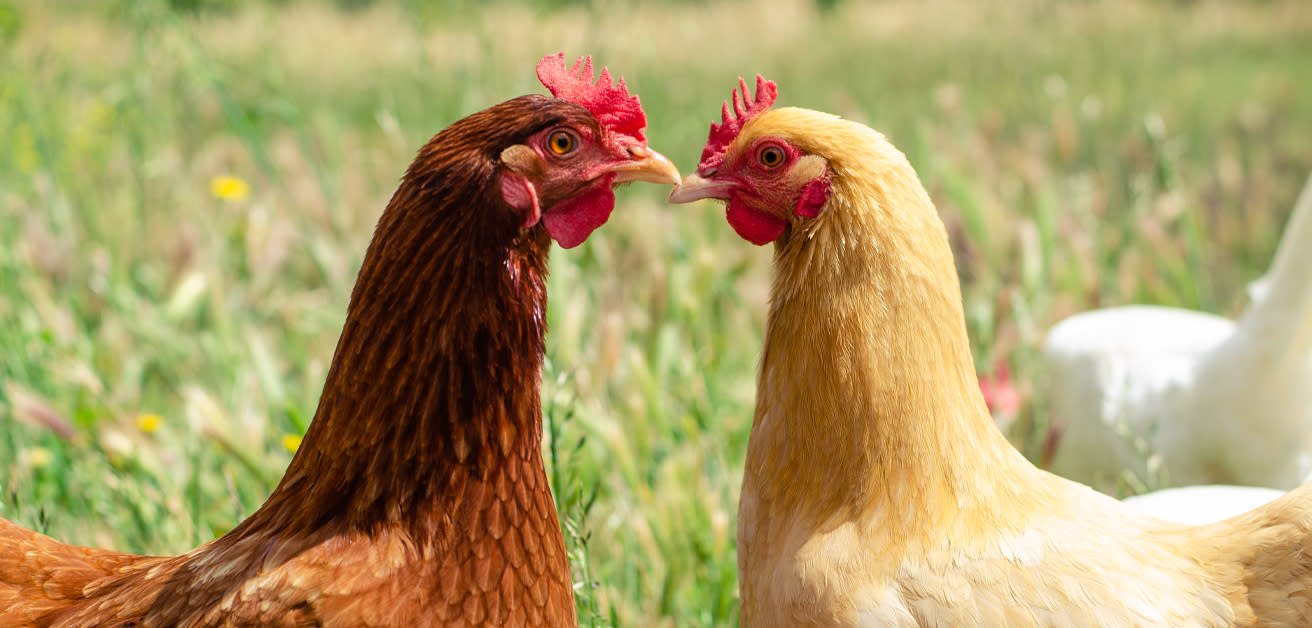
“Humane” Labels
Below are some brief explanations of the issues with some alternative and “humane” labels. There is much more to the problems than what we have here, but we wanted to offer an overview of each label and perhaps help activists with responses to questions. For more in depth information on the humane hoax, read the Articles.
Cage-Free
Cage-free refers to chickens that are bred for egg production that are not kept in cages. Cage-free egg operations keep hundreds or thousands of hens in what are called floor systems. Similar to how chickens are breed and raised for their flesh, hens are overcrowded in windowless warehouses without sunlight or space for natural behaviors. Hens are still cruelly debeaked and come from the heartless hatcheries.
There are no “humane” hatcheries. In all industrial hatcheries, chicks are hatched without a nest and without their mothers. Chicks come into the world crowed in metal drawers and are thrown into a world of conveyer belts and metal machinery. Male chicks born to egg laying hens don’t grow fast enough to be profitable for meat, so they are tossed alive into the garbage or ground up alive in maceration machines. Fully conscious chicks are ground up in high-speed grinders. Others are gassed with carbon dioxide or argon gas. Still others are sucked into high-speed vacuums and electrocuted in a metal box.
After living a short life in an overcrowded indoor facility, a hen will go to a brutal slaughter as her egg production wanes after just a couple of years. None of this changes with a cage-free label.
Free-Range or Pasture Raised
Free range or pasture raised hens are kept in the same windowless warehouses as cage-free birds, there is generally very little difference, other than they have some “access” to the outside for some time of the day. This is often just a small dirt, mud, or concrete patio connected to the building and the door may only be open for a few minutes or a few hours, there is no regulation on what the outdoor space looks like or how long the birds have access to it. Often, only a few chickens of the tens of thousands of birds in the building are even able to access the outdoor area. These unappealing outdoor spaces do not come close to a natural, comfortable setting for the birds.
Environmentally, whenever there is a transition to a truly free-range system, like a pastured pig system, the same amount of animals, or more often, a smaller number of animals, will now use several more acres of land. Free-range and organic farms where the animals are given more outdoor space require more land for the same amount of animals, so as the demand for these alternative products continues to grow, so will the need to destroy forest, wetland, prairies, and other wild areas to accommodate “free-range” farms. As demand for free-range or local animal-derived foods increases, so does the potential to increase the damage to biodiversity, as more open spaces would be required to accommodate the animals.
Organic
When it comes to animal agriculture, the only difference between organic and conventional production is the feed and grain fed to animals must be organic and animals are (mostly) drug-free. The organic label is focused on consumers health and environmental impact—humane requirements are minimal. There is some regulation on animals having access to the outside, depending on the species of animal, but this is very industry friendly. For instance, generally cows must have access to the outside, which they often already do, yet chickens are not required to have outdoor access, as most chicken facilities do not give the birds space outside. All the environmental destructions associated with animal agriculture—climate disruption, water waste, water pollution, air pollution, etc. still apply to organic animal agriculture.
In some instances, the organic label can be even worse for the animals. Dairy cows are often sick from the intensive, dirty conditions and can contract painful mastitis, an infection of the udder that can cause open sores, bleeding, and puss discharge. Mastitis is treatable with antibiotics and other medication, but in organic production, producers are not allowed to give the animals vital pharmaceuticals that can ease pain and relieve suffering. Animals with severe cases of mastitis, in extreme pain, are milked relentlessly in organic dairy operations.
Grass Fed
Grass fed beef and dairy can be even worse for the environment than conventional production. There are numerous impacts of grass fed beef and dairy, but the main problem is that it takes many months longer for cows grazing on grass outdoors to reach “market weight” (a profitable weight to slaughter them) compared to cows raised on a conventional feedlot. This is because they are able to move more (get exercise) and they take in less calories from grass, so it takes longer for them to reach a weight that is profitable for slaughter.
Grassfed cows also drink (“waste”) more water. Because of the longer lifespan (by several months), in order for grassfed beef to be widely available, the industry would need to have more cows alive at any given time, therefore producing more greenhouse gas emissions. Also, feeding cows grain as they are fed in conventional production suppresses their natural digestion process, which produces a lot of methane (a greenhouse gas). When they eat a more natural diet of grass, they actually produce more methane.
Regenerative Grazing / Holistic Management / Intensive Rotational Grazing
Like free range and pasture raising chickens and pigs, regenerative grazing methods for cows and other ruminants use fewer animals in a much larger area of land, so scaling up is impossible to feed the now 8 billion people on the planet. After four decades of trials and studies, there is no peer-reviewed science that shows that this management approach is better than conventional grazing systems. The vast majority of experimental evidence does not support the claims of enhanced ecological benefits despite being rigorously evaluated by numerous investigators at multiple locations and in a wide range of precipitation zones over a period of several decades. This method of farming does not increase soil carbon sequestering, does not increase plant or animal production, does not improve surface-water hydrology conditions.
Only under very specific and hard to acquire conditions is there actually carbon sequestration from this method, but even then, it’s time limited—it only lasts a for a short period of time, and its easily reversable and doesn’t offset the methane emissions coming from the cow.
Regenerative grazing also requires extensive fencing, which disrupts wildlife migration and wild animal movement patterns. We do not need to graze cows and in fact, this is one of the most detrimental and destructive human activities on the planet, no matter the method or the label on the product. The best and most ecological use for land is to rewild—let plants and trees grow and sequester carbon naturally.

